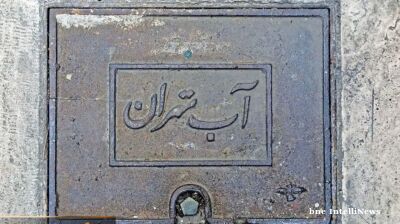French automaker Groupe Renault has signed a long-anticipated joint-venture deal with Iran's state-run Industrial Development and Renovation Organisation (IDRO) and Iranian private company Parto Negin Naseh Group (Negin Khodro) worth €660mn.
It represents yet another move by a big French company to spearhead the rebuilding of trade and investment ties with Iran in the post-nuclear sanctions era, with French energy major Total having in early July decided to plough an initial billion dollars into developing Iran's South Pars gas field phase 11. Despite intense pressure from the Trump administration to isolate Iran, it seems that France, Germany - early July also saw Volkswagen return to Iran after 17 years - and several other EU member states, along with Russia, China and Japan, are quite happy to pursue growing commercial relations with the Iranians.
AFP reported on August 7 that negotiations to create the Renault-led enterprise were painstaking, with the carmaker said to have been reluctant to meet Iranian requirements to source 40% of parts from local manufacturers, which have struggled to keep up with international standards.
"Renault officials believe that since their company is directly investing in local production, it should not be compelled to work with Iranian parts makers," IDRO chief Mansour Moazami recently told the Donya-e-Eqtesad newspaper, according to the news agency. More than 60 Iranian automotive component companies will work to supply the new Renault-led JV.
A renovated plant is to produce the Dacia Duster (rebadged as a Renault), Renault Symbol and Renault Kwid, originally designated for the Indian right-hand drive market, creating around 3,000 jobs. It is expected that cars rolling off the production lines, located in Saveh, slightly over 100km southwest of Tehran, will annually add 150,000 vehicles to the Iranian market. Renault currently has the capacity to produce 200,000 vehicles a year in Iran.
Renault never entirely left Iran during the years of nuclear sanctions which kicked in in 2012, unlike main rival and fellow French company PSA, the producer of Peugeots and Citroens. Under the deal which will greatly expand its presence in Iran, Renault has a 60% stake in the enterprise, while IDRO and Negin Khodro, which imports luxury Renault products from Europe and South Korea into Iran, hold 20% each.
The joint venture's first cars are to hit the market in around 18 months, and a second, three-year production phase is to be initiated in 2019, with production expected to grow to 300,000 cars per year.
Iranian Industry Minister Mohammad Reza Nematzadeh said at the signing ceremony that the deal should mean Iran gaining a research and development centre for automotive design.
Annually, around 1,350,000 are produced in Iran by around 30 automakers. Most assemble Chinese and Korean cars. Overall car production in Iran is forecast to amount to two million cars a year by 2020.
PSA in June last year announced a €400mn deal to manufacture 200,000 Peugeots a year in the Islamic Republic.
Until this latest announced deal, Renault's Iranian market presence relied on two production deals with largest Iranian carmaker Iran Khodro and second-largest SAIPA group.
News
_1760544574.jpg)
Syria’s al-Sharaa seeks to rebuild ties with Russia in first Kremlin talks
Syrian President Ahmad al-Sharaa met with Russian President Vladimir Putin for the first time since assuming power in Syria, marking a significant moment in the political trajectory of the war-torn nation.

Iranian oil tankers begin shutting off locations after mass reveal
Most Iran-flagged oil tankers have, for the first time since 2018, begun transmitting genuine location signals over the Automatic Identification System (AIS),but others are going "dark" again.

New clashes erupt on Pakistan–Afghanistan border
Fresh violence has broken out along the Pakistan–Afghanistan frontier, as forces aligned with the Taliban engaged Pakistani border guards in what sources say was a heavy exchange of fire.

Do 60,000 maps seized by authorities in China identify Taiwan as independent?
Chinese customs authorities in Shandong province have reportedly confiscated 60,000 maps destined for export after alleging they contained “serious mistakes” related to the depiction of Taiwan and the South China Sea.



